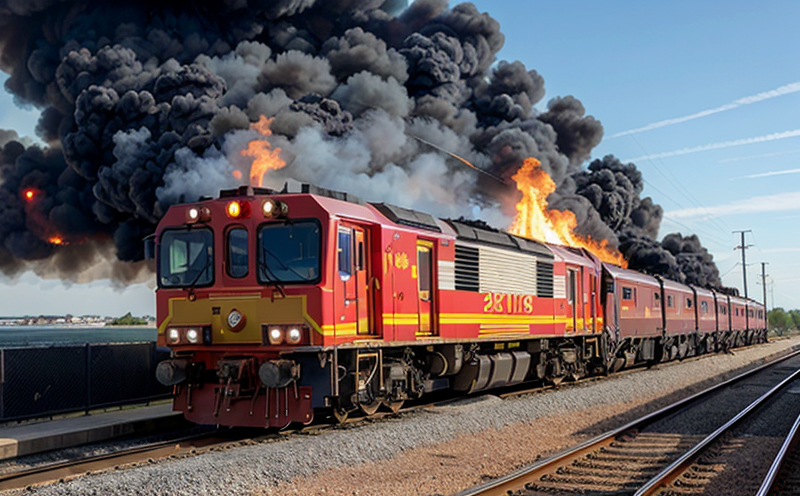Fire Resistance Testing of Marine Flooring Materials
The fire resistance testing of marine flooring materials is a critical aspect in ensuring the safety and compliance of maritime environments. This testing ensures that floors used on ships, ferries, and other vessels can withstand fire exposure without igniting, spreading flames, or compromising structural integrity. This service plays an essential role in safeguarding lives aboard these vessels by mitigating the risks associated with onboard fires.
Marine flooring materials are subject to a variety of stresses that could exacerbate the spread of fire or hinder firefighting efforts. The goal of this testing is not only to ensure compliance with international standards but also to enhance the safety and reliability of the marine environment. By conducting rigorous fire resistance tests, we can identify any shortcomings in design or material selection and recommend improvements before they become critical issues.
The testing process typically involves exposing floor samples to controlled flame exposure for a specified period under standard conditions. The materials are then inspected for signs of ignition, melting, charring, and structural damage. Compliance with relevant standards such as ISO 6941:2017 or ASTM E84-18 ensures that the tested specimens meet rigorous safety benchmarks.
For quality managers, compliance officers, and R&D engineers involved in marine projects, understanding these tests is paramount. Properly selected flooring materials can significantly impact the overall fire safety of a vessel. By ensuring that all floors are subjected to stringent testing protocols, we contribute to safer maritime environments where lives are valued above all.
The results of these tests provide valuable insights into material performance under extreme conditions. This data can be used for continuous improvement in design and manufacturing processes. Compliance with international standards ensures a level playing field across the industry, promoting safety without compromising on efficiency or cost-effectiveness.
- Customer Impact: Enhanced safety of marine environments leading to reduced risk of onboard fires.
- Increased Compliance: Ensures adherence to international fire safety standards.
- Improved Design: Identifies material shortcomings and suggests improvements before deployment.
Applied Standards
The fire resistance testing of marine flooring materials is governed by several international standards. One of the most widely recognized is ISO 6941:2017, which specifies the methods for determining the flame spread and smoke production characteristics of building products. Additionally, ASTM E84-18 provides another method to measure these properties.
These standards are designed to ensure that tested materials perform consistently across different environments. Compliance with these standards ensures a high degree of reliability in fire safety testing results. By adhering to such rigorous protocols, we can provide clients with confidence that their marine flooring materials meet the highest safety and performance criteria.
Scope and Methodology
The scope of fire resistance testing for marine flooring materials includes a comprehensive evaluation of the material's ability to resist ignition and spread of flame under controlled conditions. This involves exposing floor samples to a standard flame source for a specified duration, typically 15 minutes or more depending on the material.
During this process, the sample is observed for signs of igniting, melting, charring, and structural weakening. The testing apparatus used in these evaluations includes specialized chambers designed to simulate real-world fire conditions. These chambers are equipped with a standard flame source, smoke detectors, and temperature sensors to monitor the material's response accurately.
The methodology employed ensures that the test results are reliable and repeatable. This involves precise control over environmental factors such as humidity and temperature, which can significantly affect the outcome of the tests. The samples are prepared in accordance with specified guidelines to ensure consistency across all tests.





